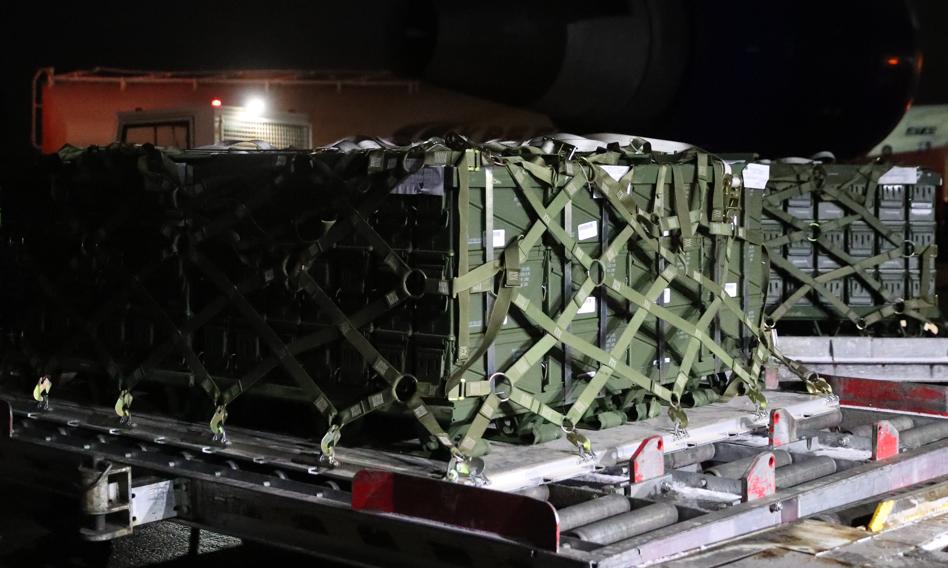All of my biggest mistakes in business have been things my wife warned against. So you might be surprised to learn that the idea to drop our life savings into a small-town bookstore shortly after our second child was born actually came from her — not from the writer in the family. As we sat at a café in Bastrop, Texas, looking across Main Street at an empty historic storefront, I was skeptical. But she was right. Even the pandemic, which forced us to sit unopened for nearly 12 months at great expense, hasn’t proved her wrong.
For most of my life as an author and entrepreneur, my work has been digital. Close to half of the sales of my books are audiobooks and e-books — and the vast majority of all sales come through a certain trillion-dollar e-commerce behemoth. Most of the advertising campaigns I’ve designed appeared online. The startups I’ve invested in, the businesses I’ve created — all primarily digital.
With digital comes the opportunity, and seemingly the obligation, to pursue scale. A live event with 500 people is a huge success. An online video with 500 views is an embarrassing failure. Back in 2009, I started an email list to recommend books to people. This month, it went out to more than 200,000 subscribers — and that’s relatively small compared with email lists such as Morning Brew or theSkimm, which hit millions of inboxes daily. Every morning, I put out a podcast episode; it’s had 60 million downloads.
The decision to open an actual bookstore in a town of 9,000 people, then, resulted in culture shock, as well as sticker shock and every other kind of shock. Running an email list is close to free. The expense of a podcast measures, after the purchase of a decent microphone, in the tens of dollars in monthly hosting fees. But a brick-and-mortar business is precisely the opposite. The total cost of opening the Painted Porch, from the building to the shelves to the inventory to the trademark work, will easily surpass $1 million. And, as any small-business owner can tell you — especially a small-business owner who survived Texas’s calamitous winter storm in February 2021 — costs are never frozen in place.
So you might think I am going to warn against the folly of brick and mortar. On the contrary. I have learned a lot of lessons worth sharing by doing this. It has been a chance to apply business and marketing thinking to a different scale of problems.
Real People, Real Relationships
For one thing, as satisfying as it is to reach large numbers of people through the enormous scale of the internet, there is even more satisfaction in doing something in real life, for real people.
Online, your customers are little blips on a screen (if they are even your customers and not just “traffic” that gets sold to advertisers). In a shop, you’re dealing with people. People who get upset if asked to wear a mask during a pandemic. People who accuse you of being a liberal if you display Michelle Obama’s book. But also people who just need a place to sit down for a minute. A kid sprinting into the store and making a beeline for one of the books you grew up loving as a child. A customer who recommends a book to another customer, and you watch a friendship emerge as they check out and go have lunch together. A few weeks ago, a father came in to buy a few books he wanted to leave to his children, as he was dying of cancer.
When we first decided to do this, I bought a course from a bookstore consultant. One of the first things that surprised me was being told that the average indie bookstore carries more than 10,000 titles. Ten thousand! As far as I could tell, it’s basically an unquestioned assumption in the business. Not only did this strike me as expensive, but it also struck me as related to the biggest problems bookstores have, according to the consultant: hiring and managing employees. With 10,000 titles, you need an inventory manager. You need cashiers and sales associates. You need a place to store all those books. You need to constantly order and reorder books. You have to stay on top of everything new and popular coming out.
My thinking is simple: If people want a specific book, they’ll buy it on Amazon. They come to a bookstore to discover new books, to experience being in a bookstore.
The first decision we made was to go in the exact opposite direction. At the Painted Porch, we carry roughly 600 titles. The vast majority of them are not new, but rather the so-called perennial sellers of the backlist. I have personally read nearly all of them. I also have room to put them all face out on the shelf. Do people sometimes come in and ask about titles we don’t have? Yes, and we can special order those books for them. But, more important, we can personally vouch for the volumes we do carry.
My thinking is simple: If people want a specific book, they’ll buy it on Amazon. They come to a bookstore to discover new books, to experience being in a bookstore. Amazon carries some 48 million titles. Barnes & Noble’s New York City flagship has four miles of shelving. Those companies get price breaks from publishers and can pass some of those savings on to customers. I can’t compete with any of that. But I can beat those companies at curation.
The Synergy of Space
Having a physical space, I have found, is also a key efficiency. Having an office upstairs saves me the cost of my old office in Austin — and saves me time, the most valuable resource, on my commute. Having a beautiful space where I can host events, or make videos for the Daily Stoic YouTube channel, or shoot photos for the Daily Dad Instagram channel, is hugely beneficial. That I’m also selling books in the same space is extra.
Before we opened the store, I was in Bucharest, Romania, for a talk. My host took me into a local bookstore that had an enormous globe hanging from the ceiling. I watched as customer after customer came in to take pictures beneath it, before checking out with books. I recalled a particularly cool floor-to-ceiling tower of books about Abraham Lincoln in the museum attached to Ford’s Theatre in Washington, D.C. Back home, I decided to surround an old, broken fireplace in our building with a tower of books. It took more than 2,000 volumes, 4,000 nails, and many gallons of glue to build this 20-foot spectacle. And now, almost every customer who comes in takes a picture of it. Some come in specifically because they heard about it.
The irony is not lost on me that the attraction of a physical space is the ability to take a picture that you can share on social media. But it’s also a focusing device for me. The Painted Porch can succeed not despite its having a physical storefront, but because of it. If all people cared about were price, they’d buy online. If they want to do something cool on a weekend, they come by.
From the moment my wife suggested we open a small-town bookstore, everything has taken longer and been harder than we expected. Besides the ongoing pandemic, we’ve had to deal with that freak winter storm and a $40,000 air conditioner replacement. But we grow from committing to crazy things and then adapting before they overwhelm us. I won’t say that the challenges helped our marriage — but we’re still standing, and that says something.
On the window of our shop, we have written in large letters: “Good things happen in bookstores.” I have repeatedly been reminded of this fact since we opened. I might even expand it: Good things happen in small businesses.
From the October 2021 issue of Inc. Magazine
Note: This article have been indexed to our site. We do not claim ownership or copyright of any of the content above. To see the article at original source Click Here












